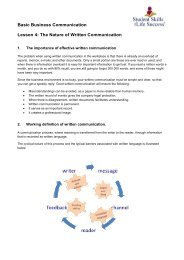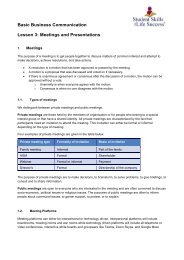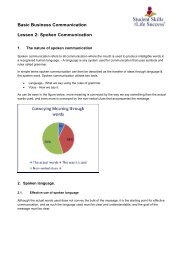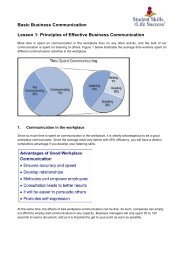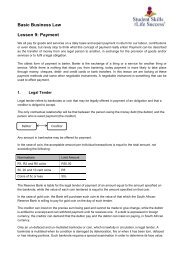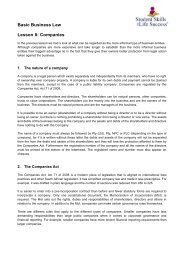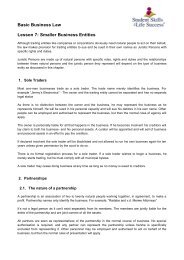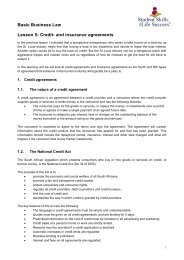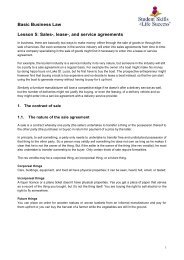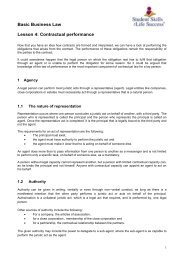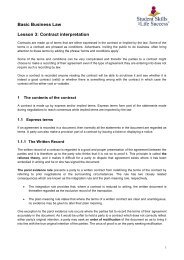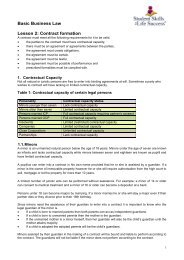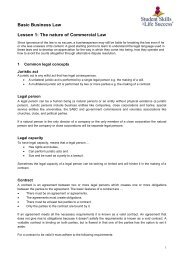Purchasing and Financing 2024
Purchasing- and Financial Management For 2nd year CATS learners. Aligned to the outcomes of the German accredited certification: “Industrie Kaufmann/frau”.
Purchasing- and Financial Management
For 2nd year CATS learners.
Aligned to the outcomes of the German accredited certification: “Industrie Kaufmann/frau”.
You also want an ePaper? Increase the reach of your titles
YUMPU automatically turns print PDFs into web optimized ePapers that Google loves.
Current assets are assets with amounts that changes continually <strong>and</strong> include.<br />
o Cash (Including money in the bank)<br />
o Accounts receivable<br />
o Inventory<br />
o Raw materials<br />
Investments are securities owned by the business <strong>and</strong> include stocks <strong>and</strong> bonds.<br />
Capital assets are permanent things your company owns <strong>and</strong> include;<br />
o L<strong>and</strong><br />
o Buildings<br />
o Equipment<br />
o Vehicles<br />
Computers, furniture <strong>and</strong> appliances are also capital assets as long as they remain for use<br />
within your business <strong>and</strong> are not items you sell.<br />
Intangible assets are patents, copyrights <strong>and</strong> other nonmaterial assets that have value.<br />
Liabilities<br />
Anything a company owes to people or businesses other than its owners is considered a<br />
liability.<br />
Current liabilities generally refer to a liability that must be paid within a year. This<br />
includes bills, money you owe to your vendors <strong>and</strong> suppliers, employee payroll <strong>and</strong> shortterm<br />
loans.<br />
Long-term liabilities refer to any debt that extends beyond one year, such as a mortgage.<br />
Owners' Equity<br />
Owners' equity, also called capital, is any debt owed to the business owners. For example,<br />
if you invested R50 000 of your savings to start a business, that amount is recorded in a<br />
capital account, also referred to as an owners'-equity account.<br />
Working capital<br />
Working capital is a measurement of an entity’s current assets, after subtracting its<br />
liabilities. Generally speaking, companies with higher amounts of working capital are<br />
better positioned for success. They have the liquid assets needed to exp<strong>and</strong> their business<br />
operations as desired.<br />
Sometimes, a company will have a large amount of assets, but have very little with which<br />
to build the business <strong>and</strong> improve processes. This can occur when a company has assets<br />
that are not easy to convert into cash.<br />
27




